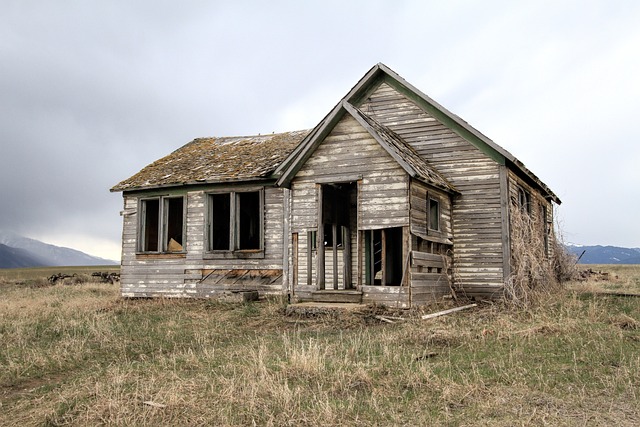
The siding of your house serves as a vital barrier against the weather in addition to being an attractive feature. Wear and tear over time may make it less functioning, which might cause problems. Maintaining the structural integrity and cosmetic appeal of your house depends on your ability to identify the warning signals that your siding needs to be replaced.
1. Extensive Damage and Decay: Indicators of Siding Deterioration
Visible deterioration and rotting are two of the most obvious indications that your siding needs to be replaced right now. Your siding material may suffer serious damage over time from exposure to extreme weather, dampness, and pests. Watch out for warning indicators including rotting, warping, or significant mold development. Your home’s structural integrity is compromised by rotting wood siding, which is often brought on by extended exposure to moisture. These weaknesses may allow water to seep in and potentially cause structural damage. Siding that is warped or buckling might be a sign of underlying problems with the insulation or foundation of your house.
2. Skyrocketing Energy Bills: The Subtle Clue of Insulation Breakdown
Your siding is essential for insulating your house, controlling internal temperatures, and minimizing energy costs. Your siding could be subtly alerting you to a breakdown in your insulation if you’ve experienced a sudden surge in your heating or cooling expenditures. An older or damaged siding loses its insulation capabilities, enabling conditioned inside air to depart while outside air seeps into your house. Your heating and cooling systems must work harder to maintain appropriate temperatures as a result of the damaged insulation, which raises your energy costs. If you live in an RV, opt for mobile home siding replacement and make your life easy.
3. Pest Infestation: The Unseen Threats Behind Your Siding
A subtle and harmful result of failing siding might be pest infestation. Rodents, termites, and ants may easily get access to your siding via cracks, gaps, or decaying places. These unwelcome guests not only damage the structural integrity of your house by digging through the wood siding, but they also put your family’s health at danger. Insects and rodents transmit illnesses and allergies, polluting your home and endangering the health of your family. It’s crucial to check your siding for damage if you’ve observed an increase in insect activity around your house or within your walls. Small holes might detect pest activity, gnaw marks, or auditory noises within your walls.
4. Fading and Discoloration: The Telltale Signs of Ageing
UV rays from the sun are continuously shining on your siding, which over time may fade and discolor it. Even while some degree of fading is normal, severe or uneven deterioration is a certain sign that your siding has outlived its usefulness. In addition to reducing the exterior appearance of your house, fading is a warning that the siding’s UV-resistant protective coating has worn off. Pay particular attention to differences in color intensity while looking for fading in your siding. If any areas are noticeably lighter or darker in color, it is an indication of wear.
5. Cracked or Loose Siding Panels: Vulnerabilities in Your Home’s Armor
Siding panels that are cracked or loose are obvious symptoms of wear and tear and need to be repaired right away. Due to these weaknesses, the outer integrity of your property is compromised, making it susceptible to invasion by moisture, vermin, and drafts. Cracks may develop for a number of causes, such as an impact, temperature changes, or the normal settling of your house. Poor installation, aging-related damage, or extreme weather may all lead to loose panels. Look for cracks in your siding, paying special attention to the seams and corners where they tend to appear most often.
6. Peeling Paint or Wallpaper Indoors: Signs of Water Infiltration
An essential but sometimes missed indication of siding problems is peeling paint or wallpaper interior. Water may enter your home’s interior if your siding is damaged, whether as a result of fractures, gaps, or rotting components. This moisture seepage may result in a number of issues, such as water damage, mold development, and poor indoor air quality. Peeling wallpaper or paint, particularly close to outside walls, is a sign of water intrusion. Look inside the troubled regions to find the problem’s origin, which often stems from faulty siding.
7. Increased Noise Levels Indoors: Siding Deterioration’s Auditory Clue
Your siding acts as a soundproofing material, shielding your house from outside disturbances. You could notice an increase in noise inside as it deteriorates. Traffic, nearby neighbors, or weather-related disturbances that were previously silenced become more audible, a sign that your siding’s protective capabilities have been impaired. It’s time to check your siding if you discover that exterior sounds are starting to annoy you more and more, or if you detect a shift in the acoustics of your house.
Conclusion
Understanding the warning signals of siding replacement is essential to maintaining the aesthetic appeal, practicality, and lifespan of your house. By taking immediate action to fix these problems, you not only safeguard your investment but also guarantee a safe, energy-efficient, and aesthetically pleasant living environment. Don’t ignore these imperceptible but important signs; instead, arm yourself with the information to make wise choices that improve the toughness of your house and your standard of living.